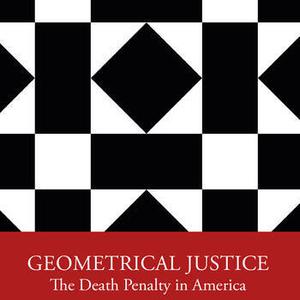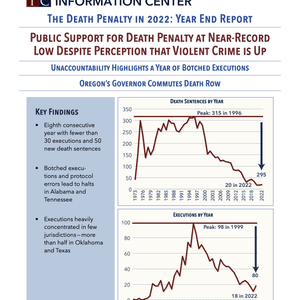
Multiple factors — from declining murder rates to the abandonment of capital punishment by many rural counties and substantially reduced usage in outlier counties that had aggressively imposed it in the past — have collectively led to an “astonishing plunge” in death sentences over the last twenty years, according to a new study, Lethal Rejection, published in the 2017/2018 Albany Law Review. Using data on death-eligible cases from 1994, 2004, and 2014, Drake University law professor David McCord and Niagara University criminal justice professor Talia Roitberg Harmon examined a range of factors to determine what caused the more than 75% reduction in death sentences in the U.S. between 1994 and 2014. (Click image to enlarge.) The authors found that just over half the decline could be attributed to a reduction in the number of potentially death-eligible murders, as a result of a combination of lower murder rates, Supreme Court decisions making murders committed by intellectually disabled offenders and offenders aged 17 or younger ineligible for the death penalty, and the abolition of the death penalty by six states. The rest of the decline, they said, was attributable to subjective decisions by prosecutors and sentencers, a factor they called “changing perceptions of death-worthiness.” Murders in the 37 states that authorized the death penalty in 1994 fell from 19,250 that year to 12,440 in 2014 — a 35.4% decline. However, death sentences dropped by more than double that rate, from 310 to 73 — a 76.5% decline. McCord and Harmon also attempted to identify factors that contributed to prosecutors’ and sentencers’ perceptions of death worthiness, which accounted for nearly half of the death-sentencing decline. The addition of life without parole as a sentencing option did not, they said, have a significant impact in lowering death sentences, except in Texas. Rather, they found that death sentences were being sought and imposed at lower rates in less aggravated murder cases, in cases with multiple perpetrators, and against defendants under age 21. They also found two types of significant geographical effects: death-sentencing dropped significantly in low-population counties across the country and in five of the nation’s highest volume death-sentencing counties (Harris, TX; Cook, IL; Pima, AZ; Philadelphia, PA; and Miami-Dade, FL). While the researchers did not report how many fewer death sentences were imposed in these counties in 2014, they described the decline as having an “outsized” effect on the national total. They conclude, “The decline in death sentencing in the United States from 1994 has been relatively rapid, quite steep, and is continuing — from the endpoint of our dataset, death sentences declined from 73 in 2014 to 49 in 2015; and in 2016 only 31 death sentences were imposed. The American death penalty seems like an ever-crankier version of the Cheshire Cat: it is grudgingly disappearing, leaving behind only its frown.”
(David McCord and Talia Roitberg Harmon, Lethal Rejection: An Empirical Analysis of the Astonishing Plunge in Death Sentences in the United States from Their Post-Furman Peak, 81 Albany L. Rev. 1 (2017 – 2018)) See Studies, Law Reviews and Sentencing.
Sentencing Data
Jul 26, 2023

NEW RESOURCES: Capital Punishment and the State of Criminal Justice 2023
Sentencing Data
Sep 14, 2022

